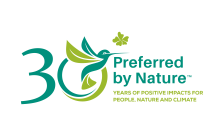Timber Risk Score: 87 / 100 in 2017. The Timber Legality Risk Assessment contains an evaluation of the risk of illegality in Portugal for five categories and 21 sub-categories of law. We found:
- Specified risk for 2 sub-categories.
- Low risk for 13 sub-categories.
- No legal requirements for 6 sub-categories
This page provides an overview of the legality risks related to timber produced in Portugal.
34.8% (3.18 million ha) of Portugal is covered by forests of which:
- About 1% is primary forest
- About 71% is naturally-regenerated forest
- About 28% is planted forest.
Roundwood production totalled 11.5 million m3 in 2015. The forestry sector (including wood processing and pulp and paper) contributed US$3.3 billion to the economy in 2011, or nearly 1.6% of the GDP.
Risk is present in Portuguese timber supply chains. The risks relate to timber harvesting. If you are sourcing timber from Portugal you should take care to ensure the risks identified are not present in your supply chains, or have been sufficiently mitigated.
View this page in Portuguese
Score: 62 / 100 in 2021
Rank: 32 out of 180 countries in 2021
There are currently no armed conflicts in Portugal according to the Council on Foreign Relations' Global Conflict Tracker
FSC Certified Forest Area: 473,179 hectares (4 December 2019).
PEFC Certified Forest Area: 277,697 hectares (31 December 2019).
Information Gathering
Timber sources
- Find out the different sources of legal timber
- Determine which source type your timber comes from
| Timber source | Description of source type |
|---|---|
|
Protected area |
Timber from forests in protected areas |
|
Classified area |
Timber from forests that are listed as a classified area |
| Production forest |
Timber from forests that are not either protected or classified |
Risk Assessment
Risk assessment summary
|
Legal rights to harvest |
|
|
Taxes and fees
|
|
|
Timber harvesting activities
|
|
|
Third parties' rights
|
|
|
Trade and transport
|
|
Risk Mitigation
Mitigate the risks in your supply chain
Learn which actions we recommended to mitigate the risks associated with the timber sources from Portugal.
Source Certified Materials
NEPCon believes that third party certification (for example FSC and PEFC certification) can provide strong assurances of the legality of the products they cover. Companies seeking to mitigate the risks of sourcing illegal timber should seek to purchase third party certified materials wherever possible.
While the European Timber Regulation does not include an automatic “green lane” for certified products, it does recognise the value of certification as a tool for risk assessment and mitigation. The European Commission says that companies “may rate credibly certified products as having negligible risk of being illegal, i.e. suitable for placing on the market with no further risk mitigation measures, provided that the rest of the information gathered and the replies to the risk assessment questions do not contradict such a conclusion.”
For more information on using certified materials in your due diligence, including how to assess whether a certification system meets EUTR requirements, see the page on Certification and Due Diligence.
Mitigation recommendations
Below is a summary of our six recommended actions to mitigate the risks associated with timber sources from Portugal.
1. Fully map your supply chain
- Our supply chain mapping tool can help you do this.
2. Obtain and verify documents
- Forest Management Plan (where obligatory, depending on land size stated by the Regional Forest Management Plan)
- Licenses for forestry activities inside protected and classified areas, depending on the specific applicable regulations on each of those areas (for forest owners that do not need Forest Management Plans)
- Licenses for cutting and pruning cork oak, holm oak and common holly (for forest owners that do not need Forest Management Plans)
- Special license for all harvesting of vegetation from alongside publicly managed watercourses
- Environment Impact Assessment for sensitive areas for all afforestation or reforestation of fast-growing forest species above an area of 70 ha or for conversion to non-forest uses above 10 ha
3. Consult stakeholders
- Consult authorities on whether protected sites and species are not damaged
4. Carry out on-site verification
- Verify that protected sites and species are not damaged










